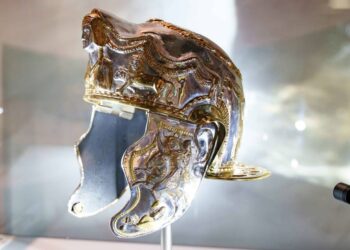People have a long history of drug use, but it was not always recreational.

Archeologists in Israel report discovering opium residues in pottery fragments over 3,500 years old. However, they explain that these are not fragments of ancient bongs — but of pottery used in ancient rituals associated with burials. The fragments were unearthed by researchers at the Israel Antiquities Authority and Weizmann Institute of Science at a site in the central Israeli town of Tel Yehud. Excavations at the site started in 2012 and focused on a series of late Bronze Age graves.
According to the authors of a new paper describing the findings, these shards of pottery offer us an exciting glimpse into the role opiates played in local societies at the time — and hint at the fact that such substances saw more widespread use than previously assumed.
Archeological opiates
“This research revitalizes a decades-old discussion on the presence and function of the opium trade across a cultural region of utmost significance in the Ancient Near East and the use and role of Base-Ring juglets during the Late Bronze Age,” the team explains.
“Furthermore, it was found that opium storage was not limited to Base-Ring juglets. Opium was possibly diluted into storage jars and juglets, signifying the importance of opium utilization at a larger scale during this period.”
Opiates and other consciousness-altering chemicals have enjoyed quite a lot of attention and use from humans throughout our history. The Near East (also known as the Levant or Fertile Crescent), an area ranging between today’s Libya and Afghanistan, including Turkey and the Arabian Peninsula, was no stranger to such substances. We know that ancient peoples in this area tended to use psychoactive materials by mildly heating, inhaling, and/or ingesting plants with hallucinogenic properties. That being said, there is still quite some debate regarding how prevalent their use actually was and the intent behind it.
One particular point of content in this regard is represented by “Base-Ring Ware”. These are distinctive pottery jugs and juglets which were produced in Cyprus but traded all along the Levantine coast. Simply put, we’re not sure what the purpose of these jugs was. Some researchers believe they were meant to contain luxury goods such as aromatic oils; others; however, think that they were the fundamental building block of a local opium trade network.
Luckily for us, archeologists found such juglets placed as offerings in late Bronze Age burial pits at the Tel Yehud site. These, the archeologists explain, were shaped to resemble the poppy flower and dated back to around the 14th century BC. They were in good enough condition to allow for an analysis of the chemical residue lacing the insides and shards of 22 such jugs.
The authors report that at least 8 of the jugs do indeed contain opium residues, supporting the hypothesis that Base-Ring Ware was used to trade such substances throughout the area. It also points to some of the ways in which opiates were used in late Bronze Age societies in this area as they were part of burial rituals. As poppy seeds are the raw material used for the production of opium, this is further evidence that the drug was known and had at least some cultural or ritual significance to local societies at the time.
Regarding the particular vessels unearthed in Tel Yehud, they were likely “placed in graves for ceremonial meals, rites, and rituals performed by the living for their deceased family members”, said Ron Be’eri, an archaeologist with the antiquities authority.
“Family members or a priest on their behalf” would “attempt to summon the spirit of their dead relatives […] and enter an ecstatic state by using opium”, Be’eri added. “We can only speculate what was done with opium.”
The earliest-known mention of opium poppy comes from Sumerian clay tablets written in Cuneiform script. These tablets were dated to around 3000 BC and hailed from the ancient city Nippur, describing the cultivation of the plant which Sumerians called “Gil”, meaning “happiness”. Further evidence of how opium was perceived and used in ancient societies hails from Egypt. Ancient Egyptians grew their own poppies in Thebes, but the use of opium was heavily associated with religious practices and was generally restricted to priests, magicians, and warriors
Today, opiates are used as an (illegal) recreational drug and as an extremely powerful painkiller and sedative for medicinal purposes. Its highly-addictive nature has led to a veritable crisis of opiate abuse in countries such as the US.
The paper “Opium trade and use during the Late Bronze Age: Organic residue analysis of ceramic vessels from the burials of Tel Yehud, Israel” has been published in the journal Archeometry.






